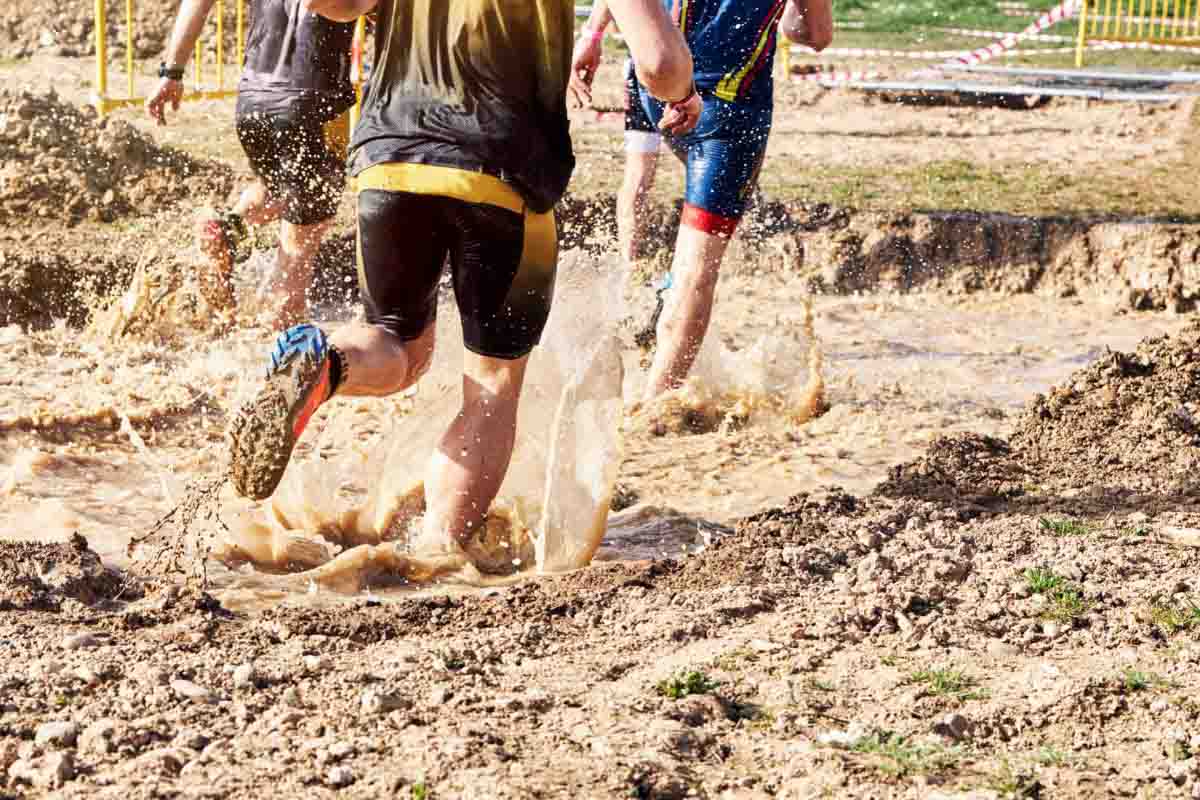What Is The Spartan Ultra? Spartan Race Ultra Guide

The most DIFFICULT of the Spartan events is the Spartan Ultra, designed for the BEST of the best to complete 60 obstacles positioned throughout 31 miles of incredibly rugged terrain.
Popular around the world among athletes and amateurs alike, the Spartan Race has 6 race events, featuring a variety of different distances, terrain types, and differing levels of obstacle difficulty.
In this article you’ll find out what Spartan Ultra is, the most challenging of the bunch.
Spartan Ultra: The Facts
1. The Course Length
The Ultra has bases in traditional long-distance running.
The course length is 50K (31 miles), and it has numerous obstacles. As a result, it is one of the most demanding sporting events in the world.
The distances have been standardized, and they should be within 100m of the target (+/-).
But otherwise, the course is always specific to the venue. The apparent difference is elevation gain.
2. The Number of Obstacles
The ultra course has a total of 60 obstacles. Many obstacles are visited twice, so you don’t have 60 different obstacles. Typically, the loop of the Beast is run twice (21K, 30 obstacles) plus a bonus loop to complete the 50K distance of the Ultra.
The are many types of obstacles and they vary from race to race but generally include some of these:
- Variation of fire jumps
- Climbing underneath barbed wire
- Wall climbing, mud crawling
- The ‘over-under-through’ (over a wall, under a wall, and then through a hole in the wall)
- Spear throwing
- Rope climbing (usually you need to climb a 12-16 feet long rope)
- Carrying heavy objects (like carrying heavy buckets)
- Herculean hoists
- Tyrolean traverses
- Climbing monkey bars
- A traversal wall (similar to rock climbing)
- The Hobie hop (tire hopping with a rubber band around the ankles)
- A slip wall (inclined surface covered in grease)
- A zig-zag log jump
- Steep mud climbs
- Tractor pulling
- Underwater submerging beneath walls
- Carrying Atlas balls
- Tire flips
- Stump balances (skipping across the water on tree stumps)
- Rope swinging
- Formerly the Gladiator Arena – since discontinued
3. Time Limitations
Along with the sheer distance and the intensity of the obstacles, the Ultra is also one of the few Spartan events that have time limitations. Competitors have to finish within a certain time to even qualify for a medal.
As an example, cutoff times might look something like this:
- 4:00 pm racers must be past Monkey Bars
- 6:00 pm racers must be past Bucket Brigade
- 8:00 pm the course is closed
These times and obstacles are not standard, they vary from venue to venue.
Times are outlined in the athlete guide closer to the event. They might have cutoff times like a first lap cutoff, times you must be at specific obstacles, and a finishing cutoff.
One of the things competitors are frequently told before competing is that not all of them will finish, and this is proven by the race itself.
4. How Long Does the Spartan Ultra Take?
Every Spartan course is different (elevation, terrain), and the weather changes yearly, drastically affecting the finishing times, so it is hard to compare finishing times.
But let’s look at the finishing times at two venues (open group, all genders).
- Ohio 2021 (one of the flattest courses): Fastest 4:57, slowest 13:37.
- New Jersey 2022 (one of the most popular events): fastest 7:22, slowest 13:53.
Fierce Gear OCR has pretty thorough calculations on the average finish time data. They concluded that the average Ultra finish times for men are 11:56 and for women, 12:16.
The best place to look at race times is the past results page on spartan.com. The results are divided by the different wave types (elite, age groups, and open waves).
5. How Much Does Spartan Ultra Race Cost?
The cost of spartan ultra registration starts from 170 USD on the open group if you register early. The price goes up to 300 USD for the elite group if you leave your registration closer to race day.
Early registration is the best way to get the lowest prices.
In addition to access to the race, registration includes some extra stuff like a finisher’s T-shirt.
Can I Watch Spartan Races for Free?
You can watch Spartan races as a spectator, but you will have to pay to get in. Tickets for spectators usually cost between 20 and 25 USD.

How to Prepare for Spartan Ultra
Completing another obstacle course race will give you an idea of what to expect. That’s probably the best way to determine whether you’re ready for Ultra.
And if you have completed the Spartan Beast, you have the best idea. Ultra is basically the same as the Beast two times (plus a bonus loop to get the whole 50K experience).
Anyway, you need to spend months of solid preparation to be ready for the Ultra.
Recommendations
It’s likely you already know what you need nutrition-wise for race day if you’re considering the Ultra.
The difficulty of the race consumes many people’s energy and stamina.
It is encouraged to bring supplies of food and water in a drop bin to replenish the energy at the halfway point (in the Spartan Ultra, you can only access the drop bin between laps 1 and 2).
Most competitors carry water in a hydration pack or vest. To save time at the halfway point, you can have a second pack pre-filled and waiting for you to start lap 2.
A headlamp is generally required for Spartan Ultras. Even if it isn’t, it’s probably a good idea as most events begin before sunrise.
Physical Requirements
Of course, not just anyone can compete in the Spartan Ultra.
Firstly, anyone under the age of 18 is forbidden from taking part, simply due to the level of endurance and the danger involved. Particularly in the case of the water submerging, the fire jumps, and the lifting of extremely heavy objects like Atlas balls and tires.
Secondly, medical assessments should be taken before anyone thinks of competing, most notably looking for high blood pressure, family histories and risks of heart attacks, and any other underlying physical ailments and problems that might cause them harm.
Spartan Race Trifecta
Spartans strive for the ultimate badge of honor, a series of three events called the Spartan Trifecta.
Trifecta consists of the Sprint, Super, and Beast you take in a particular window of time.
While not always considered a natural part of the trifecta, the Spartan Ultra can be used as a substitute for the Beast.
Competitors will still need to participate in the Super and Sprint to get the Trifecta.
Spartan Sprint
This is the first part of the Trifecta and requires competitors to complete 20 obstacles, across a shorter 5K course.
Obstacles generally include water and mud, and the race itself is considered a short-distance race – hence the name sprint.
Spartan Super
Classified as a middle-distance race, the Spartan Super features 25 obstacles, positioned along a 10K course (6.2 miles) on rugged terrain.
Super is significantly more difficult than Sprint. It represents the boundary between the more accessible multi-ability courses and the more serious tests of endurance.
Spartan Beast
This is one of the hardest courses, featuring over 30 obstacles spread across 21K (13 miles) of incredibly rugged terrain.
Whilst not as difficult as the Spartan Ultra, the Beast is the hardest of the trifecta and is usually the one that breaks most of the competitors, due to the sheer level of endurance involved.
Spartan Race: History
The Spartan Race is a series of obstacle courses designed for extreme challenges to endurance and stamina.
Developed by Joe De Sena, the Spartan Race began as a spin-off of the infamous death race, a 48-hour endurance challenge designed for high-level athletes and competitors.
To cater to a more generalized market, De Sena created the Spartan Race – designed to be an attainable physical trial for athletes and relative amateurs alike.
The first Spartan Race was held in Wilmington, Vermont in 2010, with around 500 competitors taking part.
This included running, crawling, swimming, and jumping, after which every competitor received a medal for finishing, with the top athletes receiving prizes for achieving the top spots.
The popularity of the event skyrocketed, with sponsors jumping on board in 2012 (Raptor Consumer Partners), and 2013 (Reebok), and televised events taking place from 2015.
When NBC approved a race-themed television series – called Spartan: Ultimate Team Challenge.
With race types including Spartan Sprint, Super, Beast, Ultra, Kids Race, and Trail, the events quickly grew in scale, attendance numbers, and public interest.
Riding the wave of extreme sports events, alongside American Ninja Warrior and Tough Mudder, the popularity grew. But then, times changed, and Tough Mudder was acquired by Spartan in 2020 following financial difficulties within the company.
The Bottom Line
And there we have it, everything you need to know about the Spartan Race and the Spartan Ultra.
As one of the most difficult and demanding physical tests of endurance on the planet, it is no wonder that the events have become a beacon for adrenaline junkies, keen athletes, and endurance beasts alike.
Think you’ve got what it takes?
Another difficult and demanding physical test of endurance is Murph Challenge. It is a popular challenge in the CrossFit community. You can read more about it in our article What Is the Murph Workout? The Ultimate Test of Strength and Endurance!






